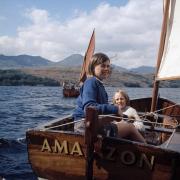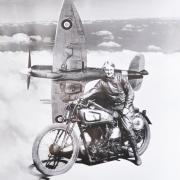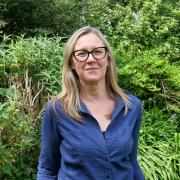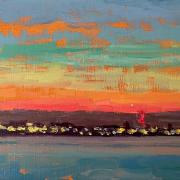A shortage of combat pilots during WWII saw the Air Transport Auxiliary service recruit civilian aviators. VIV MICKLEFIELD takes a look at Hamble’s incredible female fliers, for whom the sky was the limit | Photos: Courtesy of the ATA Museum

When Mary Ellis climbed out of the cockpit of a World War Two Wellington bomber, the ground crew waiting at the combat ready RAF base went in search of the pilot.
“I am the pilot,” she’d already told them. “Well, they didn’t believe me.” Yet flying a mighty twin-engine warplane solo was no one-off for the petite 26-year-old.
Indeed, eventually, Mary clocked-up over 1,000 such flights delivering many different types of aeroplane, including the iconic Spitfire, to wherever in Britain they were most needed.
Meaning that Hamble’s Air Transport Auxiliary (ATA) base – there were only two all-female ferry pools in the country – can rightly claim to have helped pave the way for the Allied victory over Europe’s skies. Whilst, in the process, becoming trail blazers for women’s rights.

Although better known today for its marine activities, Hamble has strong aviation roots. The aircraft company Avro established a design and testing centre here in the early 20th century.
And by 1926 there were two airfields, and a flying school which numbered among its students the legendary Amy Johnson. She was a role model for other young women longing to spread their wings beyond flying for pleasure or as part of a flying circus.
And, for some of them, the outbreak of World War Two and with it the creation of the ATA provided this chance.
A civilian organisation, the ATA was responsible for ferrying aircraft from factories to maintenance units and to frontline RAF and Royal Navy squadrons.

Regardless of their background, prospective pilots needed a flying licence and to have logged at least 250 flying hours, although this reduced as the War raged.
Denied radios and electronic navigational instruments (because the fighter pilots had priority), whatever the weather, the ATA relied on map reading, a book of ferry pilots’ notes and their flying prowess to complete each mission.
Initially, the suggestion that both sexes might apply drew extreme prejudice in some quarters.
An editorial in Aeroplane magazine quipped, “The menace is the woman who thinks that she ought to be flying a high-speed bomber when she really has not the intelligence to scrub the floor of a hospital properly.”

Undaunted, an initial eight women joined the ATA on 1 January 1940. And, by September 1941 commanding officer Margot Gore had taken charge of Hamble Ferry Pool No 15 and a crack team of women pilots, engineers and drivers. It was a first and a major breakthrough. Yet despite their skill and devotion to duty, wider opinion remained divided.
“I suppose it is inevitable that women who fly, or indeed do anything a little out of the ordinary, are of more interest to the public…than the men who do the same thing,” observed Hamble’s operations officer Alison King. Adding, “The odd and the unusual is always more of a talking point than the accepted.”
To begin with Hamble’s pilots were British, aside from one South African. However, a cosmopolitan ‘sisterhood’ soon grew-up with Poland, Argentina, the USA, Chile, Denmark and Australia among the nations represented.
Billeted initially in local houses and at the Royal Southern Yacht Club, by summer 1942 and with 30 pilots and 20 engineers now on the roll-call, a dedicated ATA accommodation block, mess room, dining room and staff office was built.

Uniforms included a pleated skirt, trousers, one-piece flying suit and leather flying jacket, great coat and forage cap. The women though had to buy their own blue shirts, black nylon stockings, shoes and necktie.
Officially, trousers and the fleece lined flying boots were only allowed to be worn whilst on duty however photographic records suggest both rules were routinely ignored.
One Hamble flyer rarely out of the spotlight was Diana Barnato Walker, an ‘It Girl’ of her day. Having previously been a Red Cross nursing volunteer overseas and an ambulance driver during the Blitz, once in the ATA, Diana flew 80 types of aircraft before the end of the War.
Despite remaining the life and soul of London society whilst off-duty, she’d reputedly catch the early morning Southampton-bound train, to be among the first airborne.

With Central Ferry Control in Andover allocating work to Hamble, regular collection points were Eastleigh’s Vickers, and Cunliffe-Owen factories, and the Airspeed factory in Portsmouth.
They’d also deliver aircraft for the Fleet Air Arm to Worthy Down near Winchester, Gosport and Lee-on-Solent. Being a repair base too, the sight of Spitfires coming into land became commonplace.
“Like playing in the clouds” was how Mary Ellis described the exhilarating experience of piloting a Spitfire. Her logbook records that on D-Day 6 June 1944, she flew from Hamble to Oxfordshire, switched to a Fairchild Argus for the return journey, before climbing into another Spitfire from Hamble to Gloucestershire.
It was a wartime career that saw several brushes with death. From being shot at by friendly fire, to landing in fog just as another aircraft approached from the opposite direction.

Diana Barnato Walker spoke of “a guardian angel” during her more hair-raising flights.
And, despite earning a reputation for never touching-down without first having applied her make-up, she later recalled, “We had this appalling responsibility weighing on our shoulders, you see…if a man took [an aeroplane] up and broke it, it’s just too bad…but if we’d broken one immediately they’d say, ‘you see, we said they couldn’t do it and they can’t’. So we had to be twice as careful as everybody else.”
Some women though made the ultimate sacrifice. Of the 168 employed by the ATA, 14 died including Amy Johnson, who’d signed-up in 1940 and was lost after the plane she’d collected in Scotland, ditched in the River Thames. And among those based at Hamble: Honor Salmon, and Dora Lang together with her flight engineer Janice Harrington.
At the beginning of the War, the women’s salaries were 20 per cent lower than those of their male counterparts. By 1943 however, and in another first, the British Government gave its blessing to equal pay for equal work within an organisation under its control.

By the end of the War the whole ATA had recorded 415,000 flying hours and delivered more than 309,000 aircraft.
A feat applauded by Lord Beaverbrook when he said, “Just as the Battle of Britain is the accomplishment and achievement of the RAF, likewise it can be declared that the ATA sustained and supported them in battle.
“They were soldiers fighting in the struggle just as completely as if they had been engaged on the battlefront.”
What became of Hamble’s heroines?
Mary Ellis (1917-2018)
Seconded to the RAF post-War, Mary was one of the first women to fly the Gloster Meteor. Later, during the 1950s, she became the manager of Sandown Airport on the Isle of Wight.
Diana Barnato Walker (1918-2008)
A continued love of flying saw Diana hit the headlines in 1963 as the first British woman to break the sound barrier, at the same time establishing a world air speed record for a woman.
Margot Gore (1913-1993)
Flight captain Gore was awarded an MBE in the 1944 New Year Honours list for her wartime service, and two years later became the first recruit to the Women’s Auxiliary Air Force Voluntary Reserve.
Learn more at ‘The spiritual home of the ATA’: atamuseum.org



























